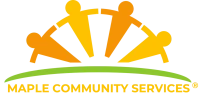PTSD Treatment Options: A Useful Guide for Individuals with PTSD
PTSD Awareness Day
June 27th is PTSD Awareness Day, a day to raise awareness and support for people who suffer from post-traumatic stress disorder (PTSD). PTSD is a mental health condition that can develop after experiencing or witnessing a traumatic event, such as war, violence, abuse, accidents, or natural disasters. People with PTSD may have symptoms such as flashbacks, nightmares, anxiety, depression, anger, guilt, or isolation. They may also avoid situations that remind them of the trauma or have difficulty trusting others.
PTSD can affect anyone, regardless of age, gender, culture, or background. Millions of people are living with PTSD right now. Some groups are more likely to develop PTSD than others, such as veterans, first responders, survivors of sexual assault, refugees, and children.
Effective treatments for PTSD
PTSD can have a significant impact on a person’s quality of life, relationships, and physical health. However, there is hope and help available for people with PTSD. There are effective treatments that can help reduce the severity and frequency of PTSD symptoms and improve functioning and well-being. Some of the most common treatments for PTSD are:
1. Therapy
Therapy is one of the most effective treatments for PTSD. There are several different types of therapy that can be helpful for PTSD, including:
-
Cognitive behavioral therapy (CBT):
A type of psychotherapy that helps people identify and change negative thoughts and behaviors that are related to their trauma and PTSD symptoms.
-
Prolonged exposure therapy (PE):
A type of CBT that helps people gradually confront their trauma memories and triggers in a safe and supportive environment.
-
Eye movement desensitisation and reprocessing (EMDR):
A type of therapy that uses eye movements or other forms of stimulation to help people process their trauma memories and reduce their emotional distress.
2. Medication
Medication can also be helpful for PTSD. There are several different types of medication that can be used to treat PTSD, including:
-
Antidepressants:
Antidepressants can help to reduce symptoms of anxiety and depression, which are common symptoms of PTSD.
-
Anti-anxiety medications:
Anti-anxiety medications can help to reduce symptoms of anxiety, such as panic attacks and racing thoughts.
-
Sleep medications:
Sleep medications can help to improve sleep quality, which can be disrupted by PTSD symptoms.
3. Alternative Approaches for PTSD
In addition to therapy and medication, there are a number of alternative approaches that can be helpful for PTSD. Some of these approaches include:
-
Support groups:
A group of people who share similar experiences and provide emotional support, coping skills, and information to each other.
-
Yoga:
Yoga can help to reduce stress, anxiety, and improve sleep quality.
-
Exercise:
Exercise can help to improve mood, reduce stress, and improve sleep quality.
-
Meditation:
Meditation can help to reduce stress, anxiety, and improve sleep quality.
Finding the Right Treatment
The best treatment for PTSD will vary from person to person. It is important to work with a healthcare professional to find a treatment plan that is right for you. There are a number of different treatment options available, and the right treatment for you will depend on your individual needs and preferences.
On PTSD Awareness Day, let’s show our support and compassion for people with PTSD. Here at Maple Services, we support individuals struggling with PTSD and help them to achieve their goals and way towards better and happy life. Let’s also educate ourselves and others about this condition and its treatments. Together, we can make a difference in the lives of people with PTSD.




